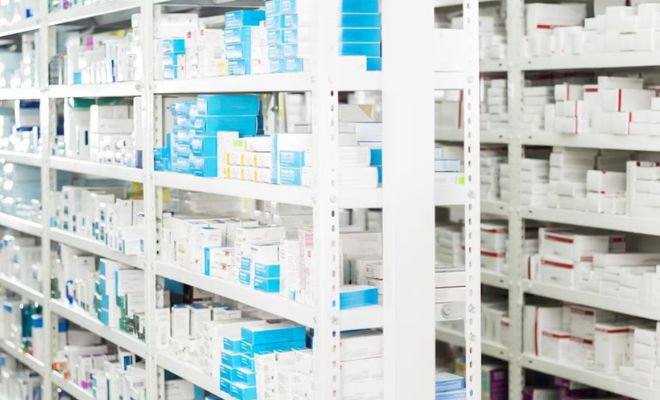

Deciphering the PFAS Regulations
Delve into the regulatory landscape surrounding the PFAS ban, detailing the specific challenges faced by medical device manufacturers.
Whitepaper

Medical Device Regulatory Compliance
Medical device regulatory compliance has become integral to sustaining innovation and ensuring patient safety in an ever-changing global regulatory landscape. Over the years, new guidelines and stringent oversight from regulatory bodies like the FDA, EMA, and CDSCO have raised the bar on device efficacy and quality. Companies must navigate these frameworks while exploring fresh market opportunities.
In this environment, achieving compliance efficiently and cost-effectively is critical for maintaining a competitive edge. At the same time, evolving patient expectations demand robust product performance across diverse care settings. At Tata Elxsi, we help clients stay ahead of these shifts through strategic compliance support, enabling agile product lifecycles and global market readiness.
Driving QARA Programs through a Global Engineering Network
Business Opportunities
Medical device companies face stringent regulatory demands, from expanded post-market surveillance to data-driven reporting, straining resources and budgets. Yet a strategic, integrated approach to harmonize compliance across markets can turn these challenges into opportunities. Strengthening processes and documentation supports market agility, protects reputation, and drives growth, positioning businesses as trusted innovators in a competitive landscape.
What's New
In Focus
Information Hub
-
How can companies stay ahead in a rapidly changing regulatory environment?
By establishing robust QARA processes and continuously monitoring global regulations, companies can anticipate and adapt to changes. Investing in training, technology-enabled compliance tools, and professional partnerships, such as with Tata Elxsi, helps streamline tasks like Packaging & Labeling, Complaint Handling, and PFAS Compliance. Regular audits and cross-functional collaboration ensure best practices, minimize risks, and safeguard product pipelines across multiple regional markets.
-
How important is post-market surveillance for medical devices?
Post-market surveillance is vital for identifying real-world performance issues, ensuring ongoing device efficacy, and maintaining adherence to evolving standards like EU MDR. It involves collecting user feedback, analyzing adverse event reports, and updating risk assessments. Robust surveillance not only helps in early detection of quality gaps but also builds trust among healthcare providers, regulators, and patients, enabling devices to stay competitive and compliant.
-
How can Tata Elxsi support businesses with specialized compliance needs?
Tata Elxsi offers comprehensive solutions, from Clinical Evaluation reporting to Biocompatibility Compliance, Packaging & Labeling, and Post-M&A Integration services. Our regulatory intelligence platform, TEDREG, helps track updates, streamline documentation, and ensure readiness across global markets. We tailor strategies to each client, offering specialized support in areas like Complaint Handling and PFAS Compliance. With a collaborative approach and extensive domain expertise, we enable cost-effective compliance and faster market entry.
-
What are best practices for medical device packaging and labeling?
Medical device packaging and labeling must protect product integrity, ensure sterility, and communicate essential safety information clearly. Compliance with global standards like ISO 11607 and UDI requirements is vital for traceability and regulatory approval. Incorporating human factors engineering, robust validations, and region-specific labeling reduces errors and recalls. Thoughtful packaging and labeling strategies support supply chain efficiency and safeguard patients across diverse healthcare environments, enhancing overall device performance and trust.
-
What are global regulatory expectations for biocompatibility, and how does ISO 10993 compliance align with these requirements?
Regulators require risk-based evaluations based on device use, contact type, and duration. ISO 10993 provides the core framework, while markets differ in data needs, submission formats, and in the treatment of chemical characterization and substances of concern.
-
What is the importance of complaints handling in medical devices?
Effective medical device complaints handling is vital for patient safety and regulatory compliance. Complaints provide valuable feedback on real-world device performance, enabling prompt investigation, root-cause analysis, and corrective action. An efficient complaints management system aligned with ISO 13485 and MDR/FDA requirements not only mitigates risks but also improves product quality and strengthens customer confidence, ensuring manufacturers meet stringent post-market surveillance obligations and support a culture of continuous improvement.
-
What should medical device manufacturers know about PFAS and substances of concern?
Per- and polyfluoroalkyl substances (PFAS) and other substances of concern are under increasing regulatory scrutiny due to potential environmental and health impacts. Medical device manufacturers must proactively assess, document, and, where needed, substitute or restrict these substances to comply with global regulations like REACH, RoHS, and MDR. Robust materials management, supply chain transparency, and risk assessments help ensure device safety, support sustainability goals, and minimize market access barriers while maintaining product performance and patient safety.
-
Why is QARA critical for medical devices?
Quality Assurance and Regulatory Affairs (QARA) are essential to ensure medical devices meet safety, performance, and compliance requirements throughout their lifecycle. A strong QARA program reduces risk, supports global market approvals, and drives consistent quality management practices. By aligning QARA with design controls, risk management, and post-market activities, medical device manufacturers can build trust, achieve faster regulatory clearances, and maintain patient safety while fostering continuous innovation.
























